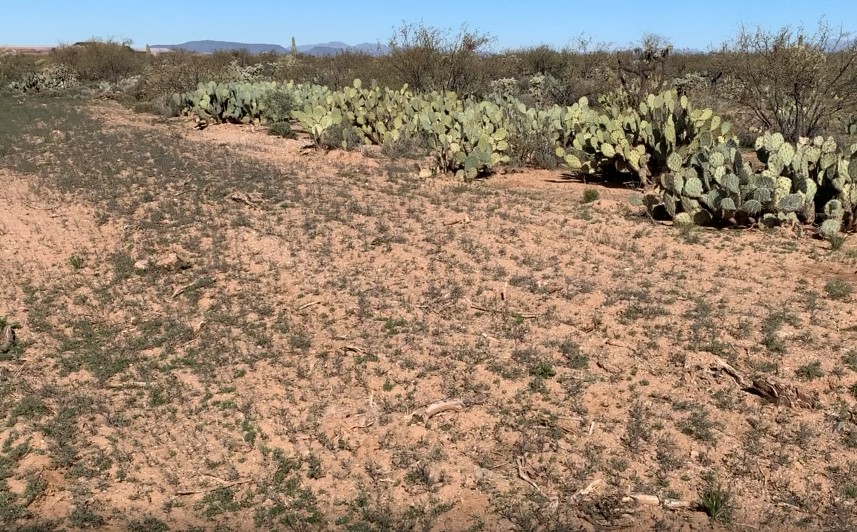
Circuit Judge William Fletcher said on behalf of the majority panel that no one disputed that Rosemont had valid mining rights on the land where it planned to dig the 3,000-feet deep by 6,500-feet wide openit mine. But, the 1.9-billion tons of waste rock that the company planned to dump on 2,447 acres of Coronado National Forest land was the crux of the issue.
Rosemont proposes to dump 1.9 billion tons of waste rock near its pit on 2,447 acres of National Forest land. The pit itself will occupy just over 950 acres. “When operations cease after 20 to 25 years, waste rock on the 2,447 acres would be 700 feet deep and would occupy the land in perpetuity,” said the judge in a written decision.
The US Forest Service approved Rosemont’s mining plan of operations (MPO) on two separate grounds. Firstly, the service concluded that Section 612 of the Surface Resources and Multiple Use Act of 1995 gave Rosemont the right to dump its waste rock on open National Forest Land, without regard to whether it has any mining rights on that land, as a “use reasonably incident” to its operations at the mine pit.
Secondly, the service assumed that under the Mining Law of 1872, Rosemont had valid mining claims on the 2,447 acres it proposed to occupy with its waste rock.
The district court held that neither grounds supported the Forest Service’s approval for Rosemont’s MPO. It held that Section 612 grants no rights beyond those granted by the Mining Law. It further held that there was no basis for the service’s assumption that Rosemont’s mining claims were valid under the Mining Law.
Indeed, based on a conclusion that there are no valuable minerals on the claims, the court held that the claims were, in fact, invalid. Therefore, the district court concluded that the service acted arbitrarily and capriciously in approving the entirety of Rosemont’s MPO in its final EIS and record of decision, the decision reads.
“We affirm the district court,” said Fletcher.
The judge, however, noted that the Ninth Circuit did not rely, as the district court did, on a conclusion that no valuable minerals existed on the claims but rather that the claims were invalid because no valuable minerals had been found on the claims.
The Center for Biological Diversity, which brought the legal challenge, welcomed the decision. Roger Flynn, director and managing attorney for the Western Mining Action Project, who argued the case for a coalition of conservation groups, said the court correctly relied on the facts and the letter of the law to invalidate the mine approval.
“The Forest Service’s assumption that Hudbay had automatic rights under the 1872 Mining Law to permanently bury thousands of acres of public land with waste dumps contradicted, as the court held, ‘a century of precedent.’ The agency and Rosemont cannot unilaterally revise the Mining Law to suit the company’s needs. The court properly held that ‘amendment of the Mining Law is a task for Congress, not for the Service, and certainly not for us,’” he said in a statement.
In an overnight press release, Hudbay retorted that while reviewing the decision, it would continue to pursue its alternative plan to advance the adjacent Copper World project.
In its March-quarter results report released earlier this week, Hudbay outlined initial plans for Copper World and Rosemont, stating that its soon-to-be-released preliminary economic assessment (PEA) would incorporate a two-phase mine plan.
The first would be a standalone operation using Hudbay’s private land for processing infrastructure and contemplating mining portions of Copper World and Rosemont located on patented mining claims.
The first phase is expected to require only state and local permits and reflects a 15-year mine life.
The second phase of the mine plan is expected to extend the mine life and incorporate an expansion onto federal lands to mine the entire Rosemont and Copper World deposits. The second phase of the mine plan would be subject to the federal permitting process.
“The company expects it will be able to pursue the federal permits within the constraints imposed by the decision, if any subsequent appeals are not successful,” Hudbay said.
The PEA will be published before the end of June.
Rosemont has total proven and probable mineral reserves, as of January 1, of 537.1 million tonnes grading 0.45% copper.
At C$6.58 per share, Hudbay’s Toronto-quoted equity is down about 37% over the past 12 months, giving it a market capitalization of C$1.8 billion.




